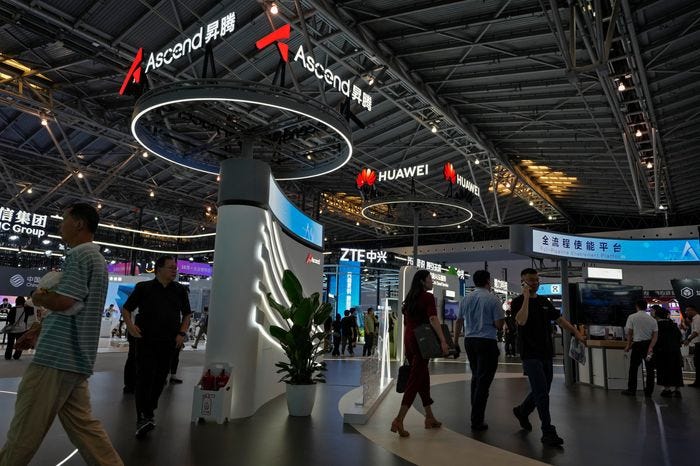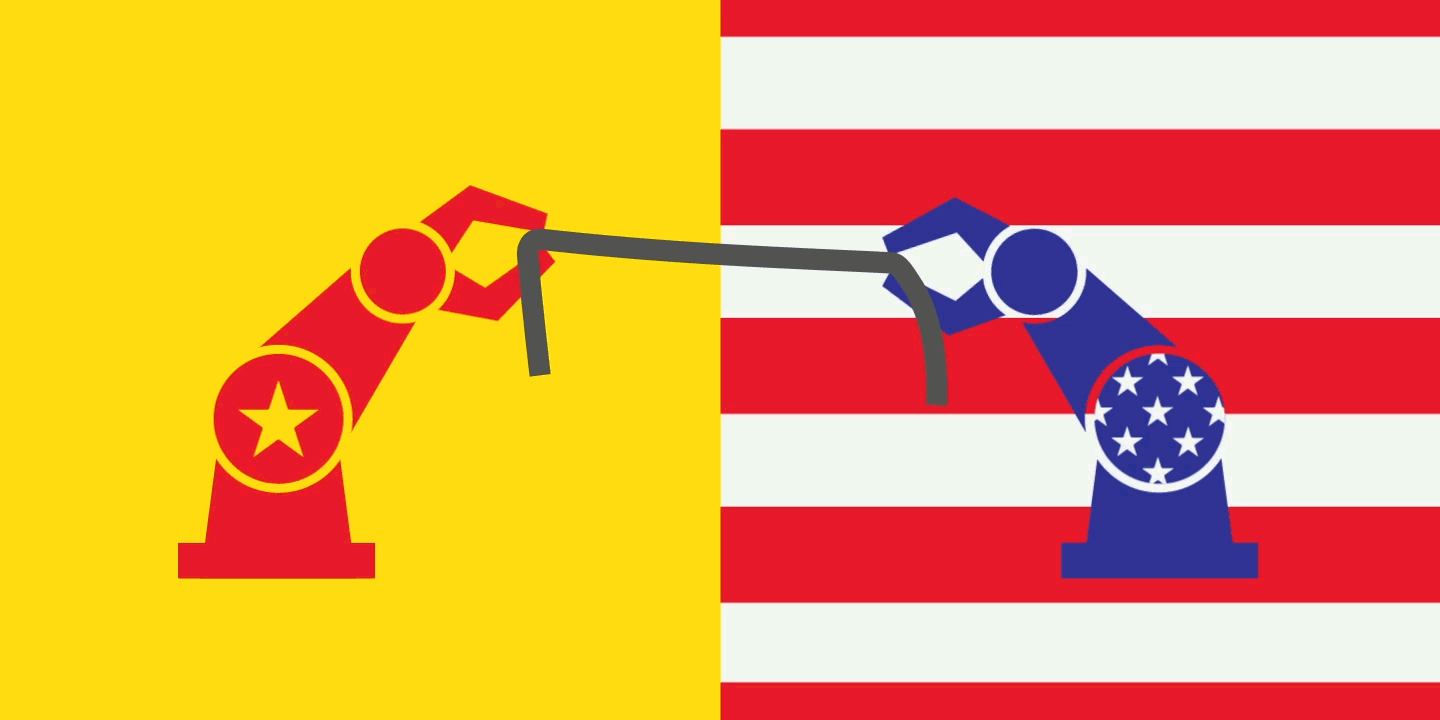AI: China's dual-track efforts on AI Chips & Infrastructure. RTZ #448
...aggressive ramping up of home-grown AI chip alternatives, and an industry to get around US export bans
Long-time readers here know I’ve long discussed the need for the US and China to ‘thread the needle’ on clashing reality of the US/China geopolitical fray on balancing tech trade and national security imperatives. I’ve been chronicling China’s top and bottom up efforts to continue to compete aggressively in this AI Tech Wave. And with the fervor of a global ‘AI Space Race’.
Propelled of course by China’s abject determination to ‘Find a Way’. To be not left behind in AI, and if possible win independence from relying on US tech altogether.
All this of course is to the short-term detriment of at least two of the US’s biggest tech companies, Nvidia and Apple amongst others, as I’ve outlined before.
Indeed, Nvidia has ramped up a whole independent effort to build AI chips and infrastructure tailored AROUND the increasing US chip curbs to China. It’s a business worth billions to Nvidia and other US tech and AI cloud infrastructure companies like Google, Microsoft, Amazon and others.
As expected, China continues its aggressive efforts to wean itself off US AI GPU chips, by ramping up home-grown alternatives, while an entire industry has emerged to secure the banned chips for use in China. These trends have been going on for a while now. A vivid example of this dichotomy are these two pieces today that provide useful updates.
Up first is the WSJ highlighting “Huawei Readies New Chip to Challenge Nvidia, Surmounting U.S. Sanctions”:
“Chinese tech company looks for AI business with Ascend series but still faces production issues.”
“China’s Huawei Technologies is close to introducing a new chip for artificial intelligence use, overcoming U.S. sanctions to challenge Nvidia NVDA in the Chinese market.”
“Chinese internet companies and telecommunications operators have been testing Huawei’s latest processor, called Ascend 910C, in recent weeks, according to people familiar with the matter. Huawei told potential clients that the new chip is comparable to Nvidia’s H100, which was introduced last year and isn’t directly available in China, the people said.”
“Huawei’s ability to keep advancing in chips is the latest sign of how the company has managed to break through U.S.-erected obstacles and develop Chinese alternatives to products made by the U.S. and its allies. Aided by billions of dollars in state support, it has become a national champion in areas including AI and a key part of Beijing’s endeavor to “delete” American technologies.”
“Still, Huawei has run into production delays in its current chips, according to the people. It faces the prospect of further U.S. restrictions that could deprive it of machine components and the latest memory chips used in AI hardware.”
Despite the production teething problems, the Huawei chips could be competitive to Nvidia’s offerings:
“Dylan Patel, an analyst at industry research firm SemiAnalysis, said he viewed Huawei’s 910C as an advance that could perform better than Nvidia’s B20.”
“SemiAnalysis estimated in July that Nvidia would sell over one million H20 chips in China this year, valued at some $12 billion. The number of chips sold would be almost twice as many as Huawei is expected to sell of its 910B, SemiAnalysis said.”
The article offers a lot of additional details around the Huawei and China’s overall efforts to build alternatives to Nvidia’s offerings in China, and is worth reading in full.
In the meantime, there’s a vibrant industry developing around securing US chips into China via third-party countries. Here, the Information explains in “Nvidia AI Chip Smuggling to China Becomes an Industry”:
“While smuggling of Nvidia chips into China has been documented in media reports over the past year by Reuters, The Wall Street Journal and other outlets, those reports have portrayed smuggling as a small-scale operation—a couple of units packed in travelers’ suitcases moving across Chinese borders.”
“But in recent months, both the scale and the sophistication of smuggling have taken off. Scores of mom-and-pop firms in Asia have concocted elaborate schemes that involve setting up shell companies and disguising chips in truckloads filled with manufacturing machinery or other goods, and they in turn oftentimes rake in north of $100 million from a single order. Their clientele has also expanded from small, obscure companies to businesses with ties to well-known, publicly listed tech companies, according to procurement documents viewed by The Information.”
The full piece is again worth reading to understand the sheer sophistication and scale of the efforts to procure large amounts of US AI chips and infrastructure into China via other countries.
I discuss these two opposing trends again to highlight the ongoing difficulty of ‘threading the needle’ between the US and China on tech trade and Geopolitics. Occurring and accelerating at the State and private company levels on both sides.
We should expect these trends to continue at full force from opposite sides as this AI Tech Wave progresses this year and next.
And of course continue to see the dual internal ‘rock and a hard place’ issues of AI WITHIN China I’ve outlined as well. Stay tuned.
(NOTE: The discussions here are for information purposes only, and not meant as investment advice at any time. Thanks for joining us here)







